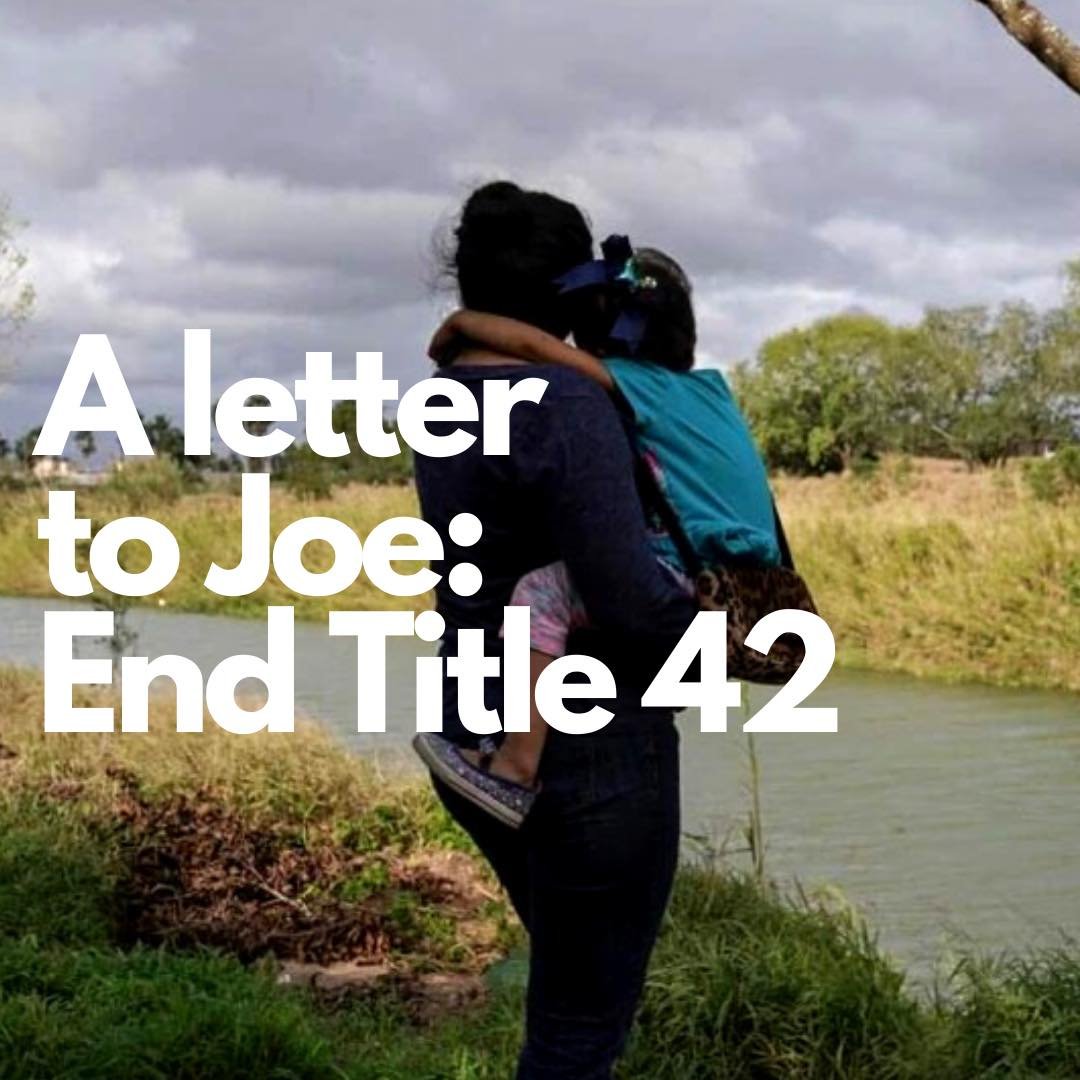“Letter to Joe” campaign opposes Title 42
What: Demand an immediate end to Title 42
When: By December 10
How: Write a personal letter to President Joe Biden with the help of our toolkit. Toolkit update: The email addresses for contacting the president have been disabled. Electronic "Letters to Joe" must now use this online form.
In the first two weeks of Advent, the “Letter to Joe” campaign plans to inundate the White House with letters demanding the immediate cessation of Title 42. To help you create personal letters and emails, the immigration working group has created a toolkit, available for download as a Word or PDF file. In the toolkit are a sample letter, templates, some advice about structuring a letter, and more background on Title 42 talking points. If you want to participate, please make sure to consult the toolkit for details about how submissions to the White House should be handled so that they will be identified as part of the campaign.
On Saturday, November 20, the immigration working group introduced a letter-writing campaign to the President in opposition to his continued support of Title 42. A recording of the session is available; of particular interest is the presentation by Felicia Rangel-Samporano, the founder of the Sidewalk School who works daily across the border. Her presentation begins at 19:20 of the recording.
Title 42 is a public law instituted in 1944 that gives a president the authority to block any entrance to the United States from a country in the midst of a communicable disease outbreak. President Trump activated that law with respect to anyone crossing the US-Mexico border, citing COVID-19. President Biden has refused to stop this application of Title 42 in spite of the fact that it has prevented anyone crossing the southern border from seeking asylum, a right guaranteed by US asylum law and international treaties on asylum.
The effects of Title 42 have been devastating: those who cross the border and present themselves to US authorities as asylum seekers are immediately returned to Mexico with no legal hearings. There are some exceptions made by the Border Patrol (unaccompanied children and special hardship cases involving health, for instance). Such exceptions, once given by CBP, are handled through the standard procedures required by asylum law. The irony is that when recipients of such exceptions were given a COVID-19 test, 8% of those tests were positive at a time when the positivity rate was 13.6% in Hidalgo County, TX — who was at greater risk of spreading the virus?
When returned to Mexico, these asylum seekers — who come from Central America, South America, Haiti, and elsewhere — have no safe place to return and stay in border Mexico, hoping to try the border crossing again when US policy changes, or hoping that they will have better luck convincing the Border Patrol to consider them exceptional cases. These people live in tent encampments, the largest of which are in Reynosa, Mexico, across from McAllen in the Rio Grande Valley of Texas. These encampments are primitive and dangerous to live in. Here is an excerpt from what Jim McKeever, part of the immigration working group, recently posted online:
Kidnappings happen daily.
Families live under tents and tarps in a downtown plaza, wary of gang members roaming the streets nearby.
Each child, each woman is worth between $2,000 and $6,000 to rival cartels that prey upon the vulnerable.
Where is this happening?
Who are these vulnerable people?
Why is this allowed to happen?
They are asylum seekers expelled by the Biden administration, dumped across the US-Mexico border from Texas into Reynosa, many times in the middle of the night to fend for themselves blocks away from the encampment.
Please join us this Advent season! Get involved by downloading the toolkit as a Word or PDF file. For questions, contact us at gdbrazier@gmail.com

